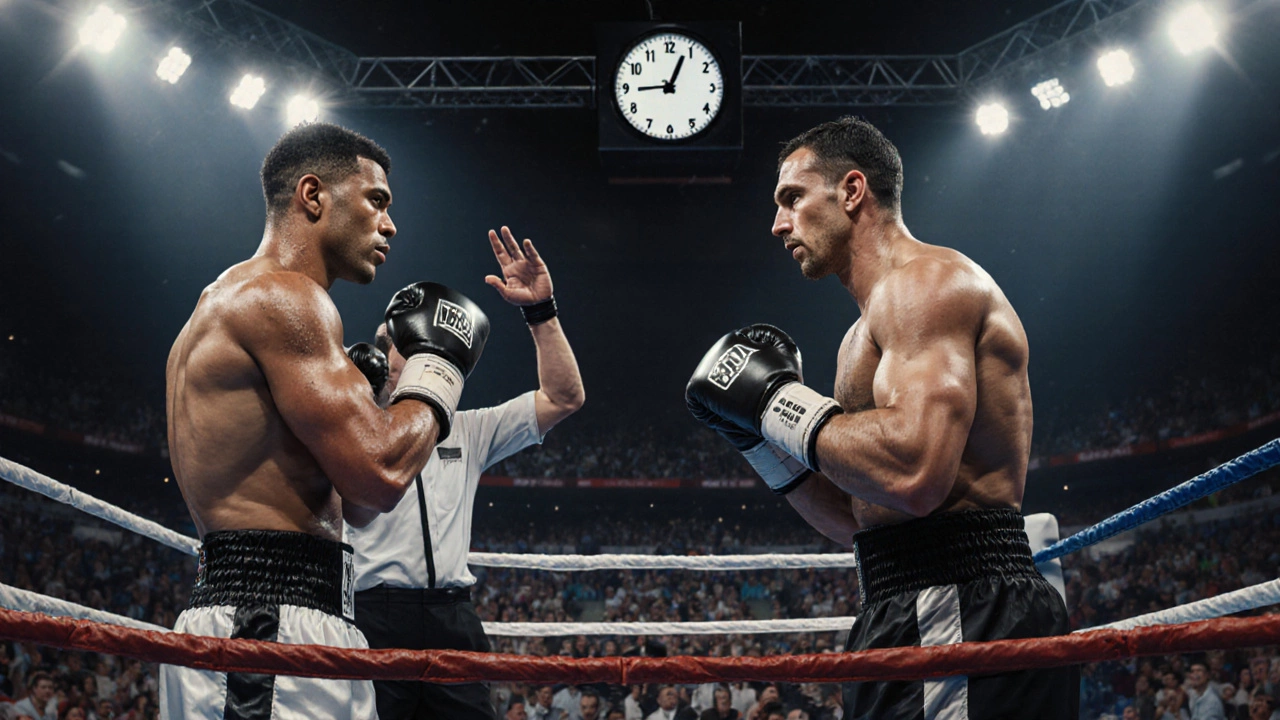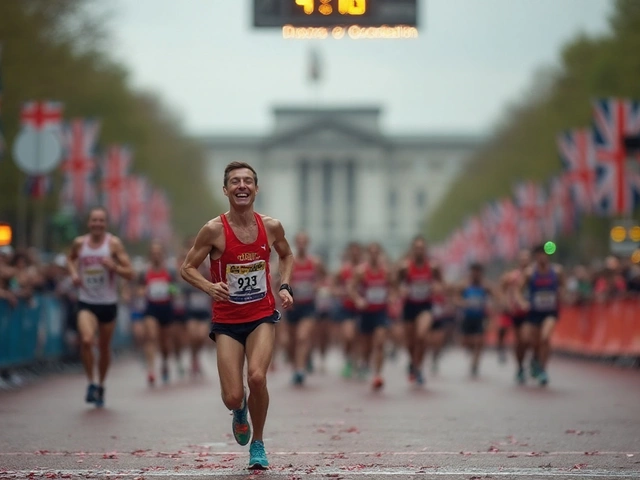Fight Duration in Boxing, MMA and Combat Sports
When talking about fight duration, you’re really looking at the total time a combat bout runs from the opening signal to the final bell or stoppage. Fight Duration, the elapsed time that defines a bout’s length. Also known as bout length, it guides strategy, safety and viewer experience. This concept is tightly linked to Boxing, a striking sport organized in timed rounds and MMA, a mixed‑martial‑arts format that mixes striking and grappling within set periods. The Referee, the official overseeing timing and rule enforcement plays a crucial role, making sure every second counts and that the fight ends at the right moment. In short, fight duration encompasses the total time a combat event lasts, it requires clear timing rules, and it is directly influenced by round structures and referee decisions.
Boxing’s classic format uses three‑minute rounds with a one‑minute rest in between. A ten‑round championship bout therefore caps at 30 minutes of fighting plus nine minutes of rest, totaling 39 minutes if it goes the distance. That structure means fighters must pace themselves, manage energy, and plan knock‑out attempts within a predictable window. Because the sport’s governing bodies set these round lengths, the timing rule becomes a core part of the sport’s identity. The referee’s count after a knock‑down also adds a brief, yet decisive, pause that can affect the overall fight duration.
MMA, on the other hand, typically runs three five‑minute rounds for regular contests and five five‑minute rounds for title fights. The shorter rest periods—usually one minute—create a higher intensity flow, and the possibility of submissions or technical knock‑outs can end the fight at any point. Here, fight duration is shaped not only by round length but also by the diverse ways a bout can stop, from a referee’s stoppage to a doctor’s intervention. The rule‑book that governs MMA explicitly defines how the clock is stopped and restarted, ensuring consistency across promotions.
When a referee steps in to stop a fight, they are exercising the ultimate authority over fight duration. Whether it’s a count‑out in boxing or a technical knockout in MMA, the referee’s judgment can truncate the scheduled time, prioritizing fighter safety above entertainment. This relationship shows how referee timing influences the final bout length and underscores why referees undergo specialized training on timing protocols.
Key Factors That Shape Fight Duration
Beyond the basic round structure, several other elements affect how long a fight lasts. Weight class matters – heavier fighters often have shorter bouts due to higher knockout power, while lighter divisions may see longer, more technical fights. The competition level also plays a role; title fights frequently go the full distance because the stakes push athletes to endure.
Rule variations across organizations add another layer. Some boxing commissions allow ten‑second rest periods after a knock‑down, while others stick to the standard eight‑second count. In MMA, the unified rules dictate that a fighter cannot be revived after a certain number of strikes without a clear indication they can defend themselves, which can cut the fight short. Understanding these nuances helps fans and participants predict how long a bout might run.
Technology has begun to impact fight duration as well. Digital timers, instant replay, and automated round clocks reduce human error, ensuring that the announced time matches the actual combat minutes. This precision supports fair play and gives broadcasters reliable scheduling, which in turn influences how events are packaged for fans.
From a training perspective, athletes tailor their workouts to match the expected fight duration. Boxers condition for three‑minute bursts with high intensity, while MMA fighters gear up for five‑minute intervals that blend striking, grappling, and cardio. Coaches design sparring sessions that mimic the exact timing of rounds, helping fighters manage fatigue and execute game plans within the allotted time.
For spectators, fight duration shapes the viewing experience. A three‑round, fast‑paced boxing match feels different from a five‑round title bout that can stretch nearly an hour. Knowing the typical length helps fans plan their viewing schedules and set expectations for when key moments, like potential knock‑outs or submissions, are most likely to happen.
In the realm of betting and odds, fight duration also plays a strategic role. Bookmakers factor in the likelihood of a fight ending early versus going the distance, adjusting payouts accordingly. Bettors who understand how round length, fighter style, and referee tendencies interact can make more informed wagers.
Safety protocols are tightly bound to fight duration. Medical staff are prepared for the expected number of rounds, and post‑fight examinations are scheduled based on how long the athletes have been exposed to combat stress. Longer fights increase the risk of cumulative damage, prompting commissions to enforce stricter medical checks for bouts that exceed typical lengths.
Overall, fight duration is more than a clock; it’s a central piece that connects rules, athlete preparation, officiating, technology, and audience engagement. By grasping how each of these elements intertwines, you gain a clearer picture of why some fights explode early while others stretch to the final bell.
Below you’ll find a curated list of articles that dive deeper into round structures, timing rules, referee duties and real‑world examples from boxing and MMA, giving you a complete view of how fight duration plays out across combat sports.
Boxing Match Length Explained: Rounds, Time Limits & What to Expect
Learn the exact duration of professional and amateur boxing matches, how rounds and breaks work, and what to expect at a live fight.





